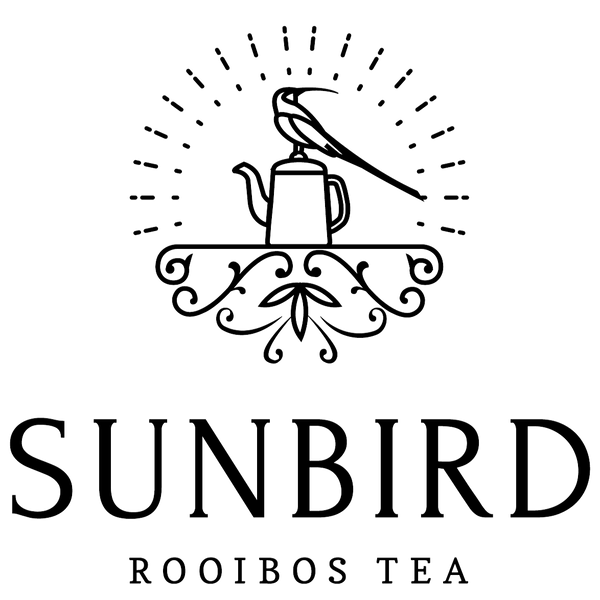
Rooibos and it’s health benefits
Share
‘Tastes like medicine’ means, with a certain irony, that it tastes horrible. The healing properties of the cure justify the awful taste. ‘A bitter pill to swallow’ is similarly an uncomfortable truth – unpleasant, yet better than the alternative of shying away.
Yet, despite these maxims, there is an exception to them. (And we’re not referring to the kiddies’ sugar laced and hyper flavoured syrups.) When it comes to Rooibos, the first thing we love about it is its flavour – it tastes amazing – by itself, blended with our natural spices or as part of a recipe. While we suggest, but stop short of insisting, that it’s best on its own, its flavours complement many others.
Yet, it’s unlikely that flavour is what first brought this plant to our attention. And we like to say ‘our’ because despite the San being the first people that we can be sure of who used it, it’s possible that it was used even further back in time at a point where the earliest humans had yet to leave Africa. And so wherever you are in the world – it’s possible that all our collective ancestors knew Rooibos.
Living in the Cape has many privileges. One is that it is the cradle of human culture. Archaeologists speculate that between the rich ocean delivering a steady supply nutritious foods to early inhabitants, it was also the botanical pharmacy on land that assisting us in taking the next steps on our paths to modern society.
Unfortunately, we don’t know how it was used in ancient times as there are no records. Rooibos has been found at digs, but this only suggests that it was used – it does not tell us how. Yet, as modern science puts Rooibos under the microscope, it gives up its secrets, and so we are relearning what we once knew: that it has tremendous health properties.
In the wild, Rooibos may be overlooked at a glance. It’s not the tallest plant, nor does it have the showy flowers. But, with only a bit more interest, you might notice that Its thin needles are often the greenest leaf around. And then, after death, instead of falling to a drab shade of brown, it bursts into a flame-like red – the colour that gives it its name. These stand out colours suggest one of Rooibos best features: it’s high antioxidant levels.
Rooibos is one of the pioneer species. Fynbos – the vegetation type unique to the Cape – is fire dependent. Many plants rely on fire as part of the lifecycle, Rooibos being among the foremost of these. It’s one of the first to germinate after a fire and is able to do so because it fixes nitrogen in its roots. There is a symbiotic relationship with bacteria in the soil that allows it to take nitrogen from the atmosphere and turn it into useable materials for building cells – enabling its growth. Essentially, it takes thin air and creates own fertilizer. This helps given it the rich green colour.
However, because it’s metabolism has a turbo charge, it needs some way to regulate it, otherwise certain negative reactions can run away from it – and to hinder these oxidizing free-radical creating reactions, the plant also creates an abundance of anti-oxidants which temper the metabolics. And for people, these same antioxidants serve as a buffer to prevent cancerous cells forming within our own bodies.
These antioxidants not only assist in the prevention of cancer, but may also promote cardiovascular health. There is some evidence, including studies using Rooibos, that show that antioxidants can assist in reducing cholesterol. However, the link hasn’t always been demonstrated and its debated whether the benefits are from the antioxidants themselves or the other properties from the healthy foods that generally contain antioxidants.
While this hidden dance is happening within the body, Rooibos also has more visible benefits. We’ve mentioned it’s flavour, but it’s not just soothing on the pallet, but also on the skin, with no less than two cosmetics brands using it as the primary ingredient in their range. Rooibos has been used to treat exzema, alleviate sunburn, and perhaps even prevent melanoma from taking hold.
Other studies have shown Rooibos to be assist in managing diabetes. Rooibos has also been known to reduce colic in babies and it has been used traditionally as a supplement when a new mother is unable to express.
But for all these wonderful properties, Rooibos should not be seen as a cure. Some ailments can’t be helped and for these cures are necessary. However, another adage as old as time is prevention is better than cure. And at Sunbird, this is what we prescribe.
Many other brands will overstate the benefits of Rooibos. Does Rooibos assist with weight loss? While there’s nothing in it that might suppress appetite or restrict nutrient uptake (gladly), there is something to be said about choosing this over other weight gaining alternatives. Does it cure insomnia and promote mental health? Again, it’s not a sleep inducing or psychiatric drug, but in the ritual of making a relaxing caffeine-free cup before bed. Perhaps this is where the mental health benefits lie.
By choosing Rooibos over other beverages that may have caffeine, you’re making a good choice. If you forego the sugar, that’s another excellent choice. And good choices add up to become a good lifestyle.
Ultimately, this is what we would encourage: that Rooibos is just one aspect of a well rounded healthy lifestyle. Enjoy the vices in occasional moderation, and then rather than suffer through unpleasantness for the sake of health – find the health in joyful actions. Have fun exercising, surround yourself with positive people. Savour food that not only nourishes you, but also rewards your tastebuds. Make Rooibos part of your life to enjoy all its benefits to the full.
